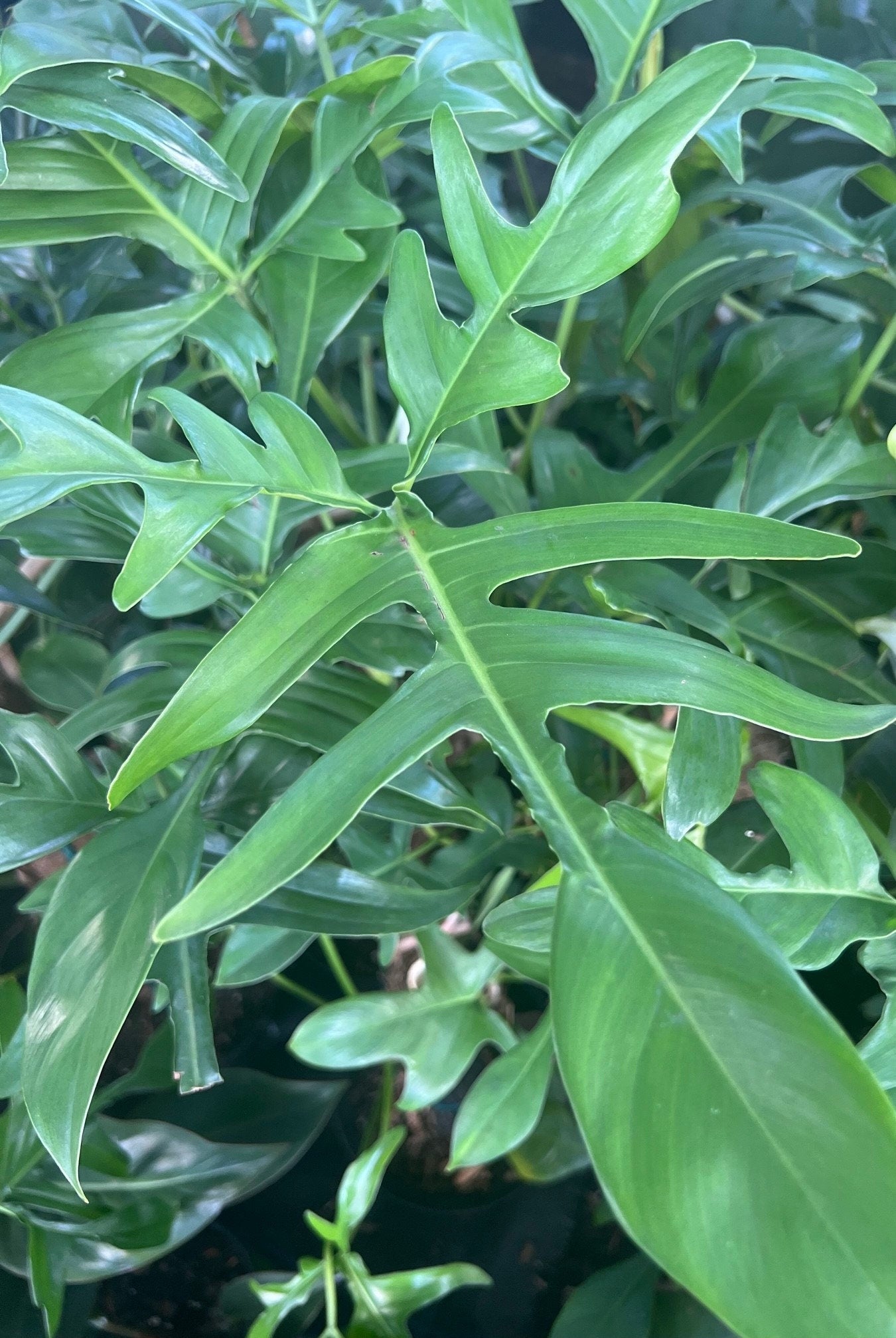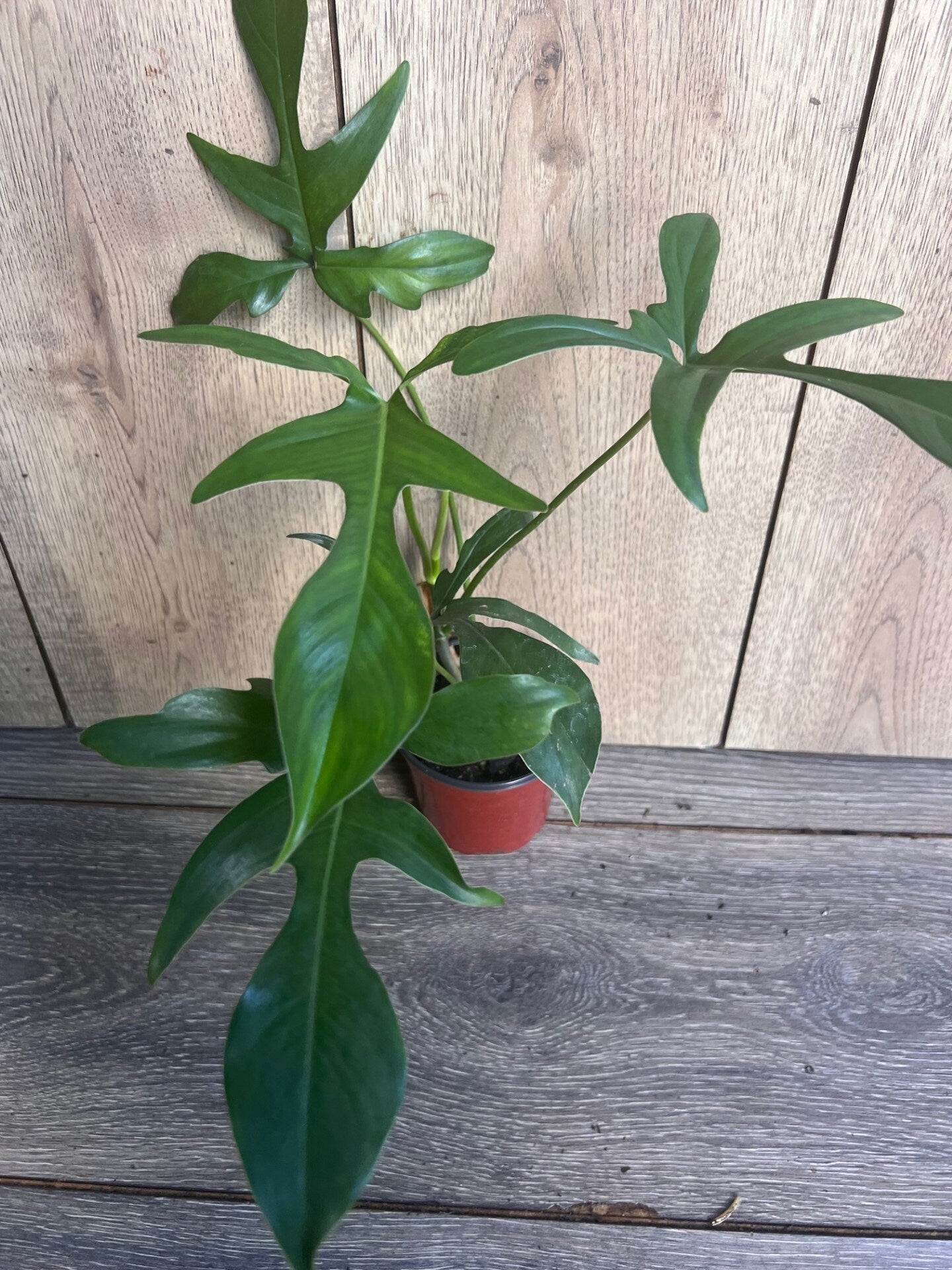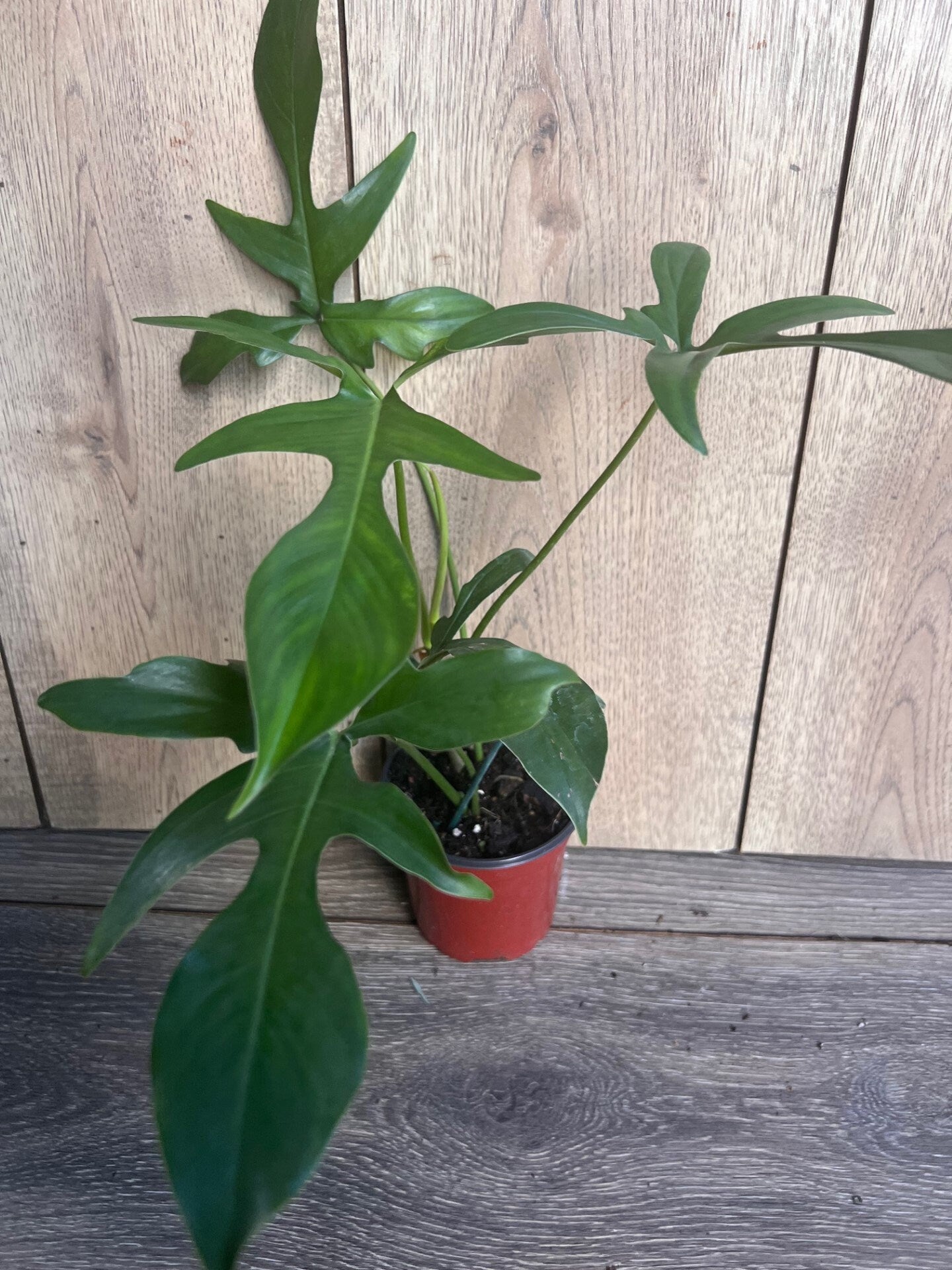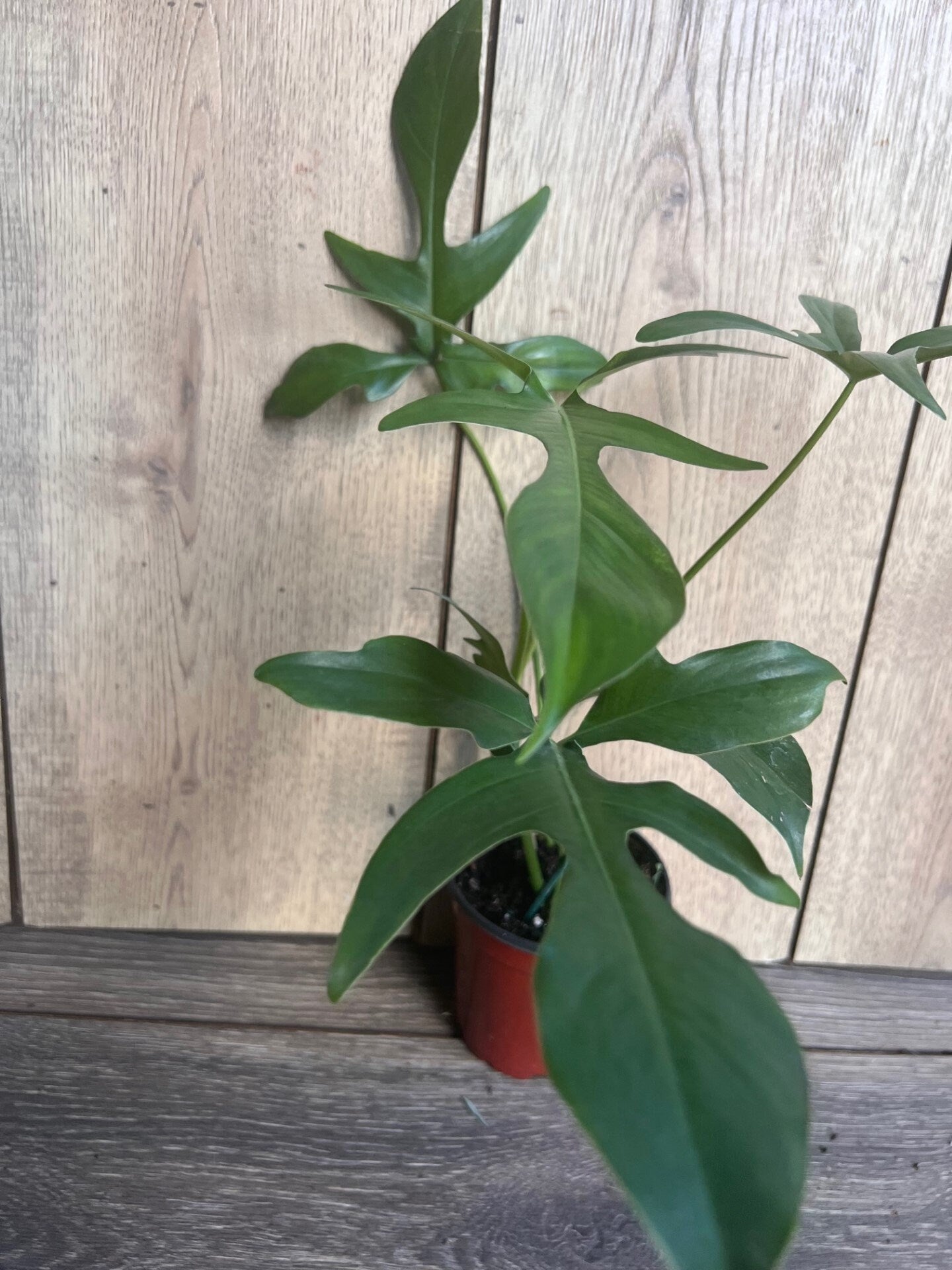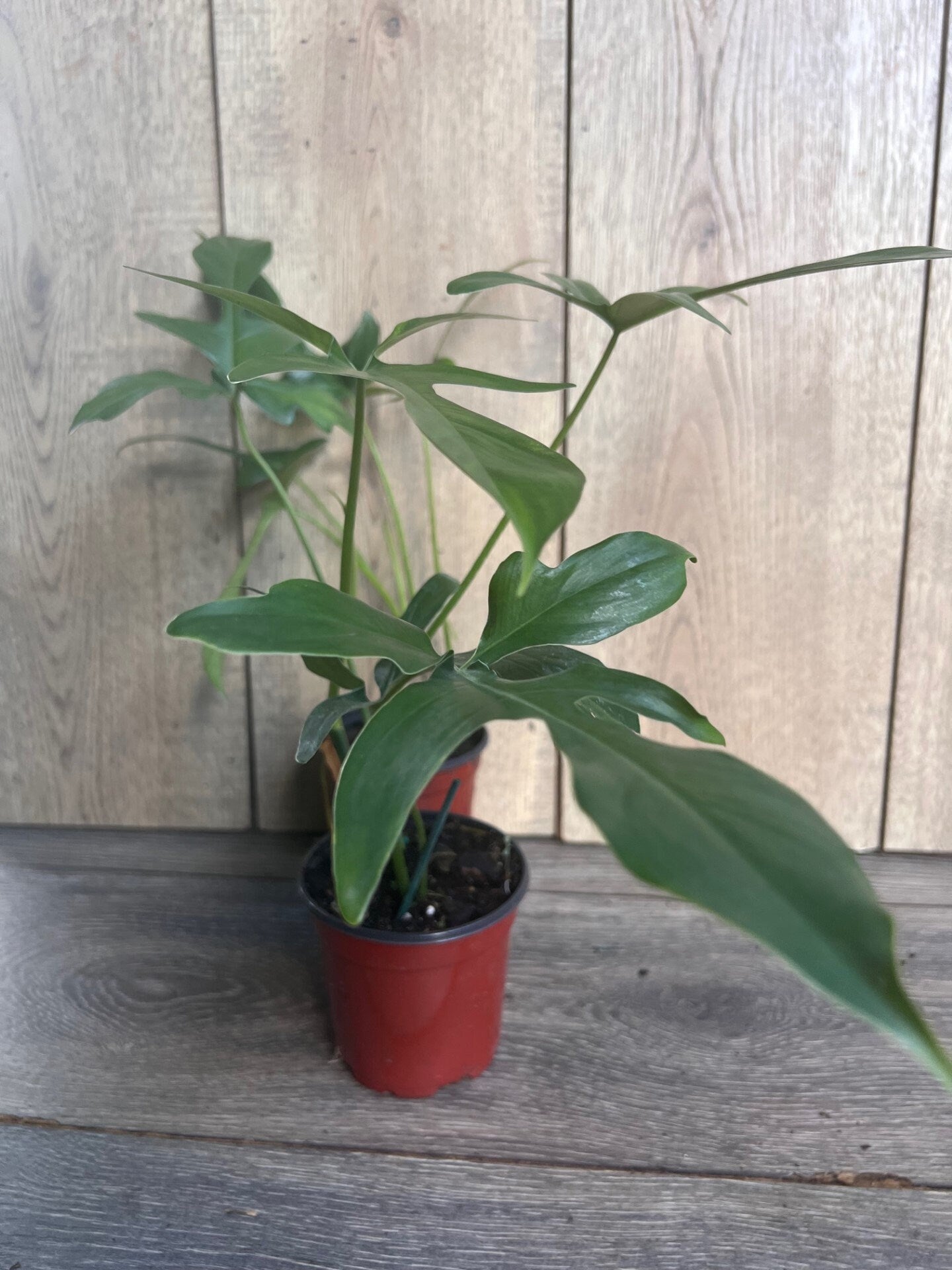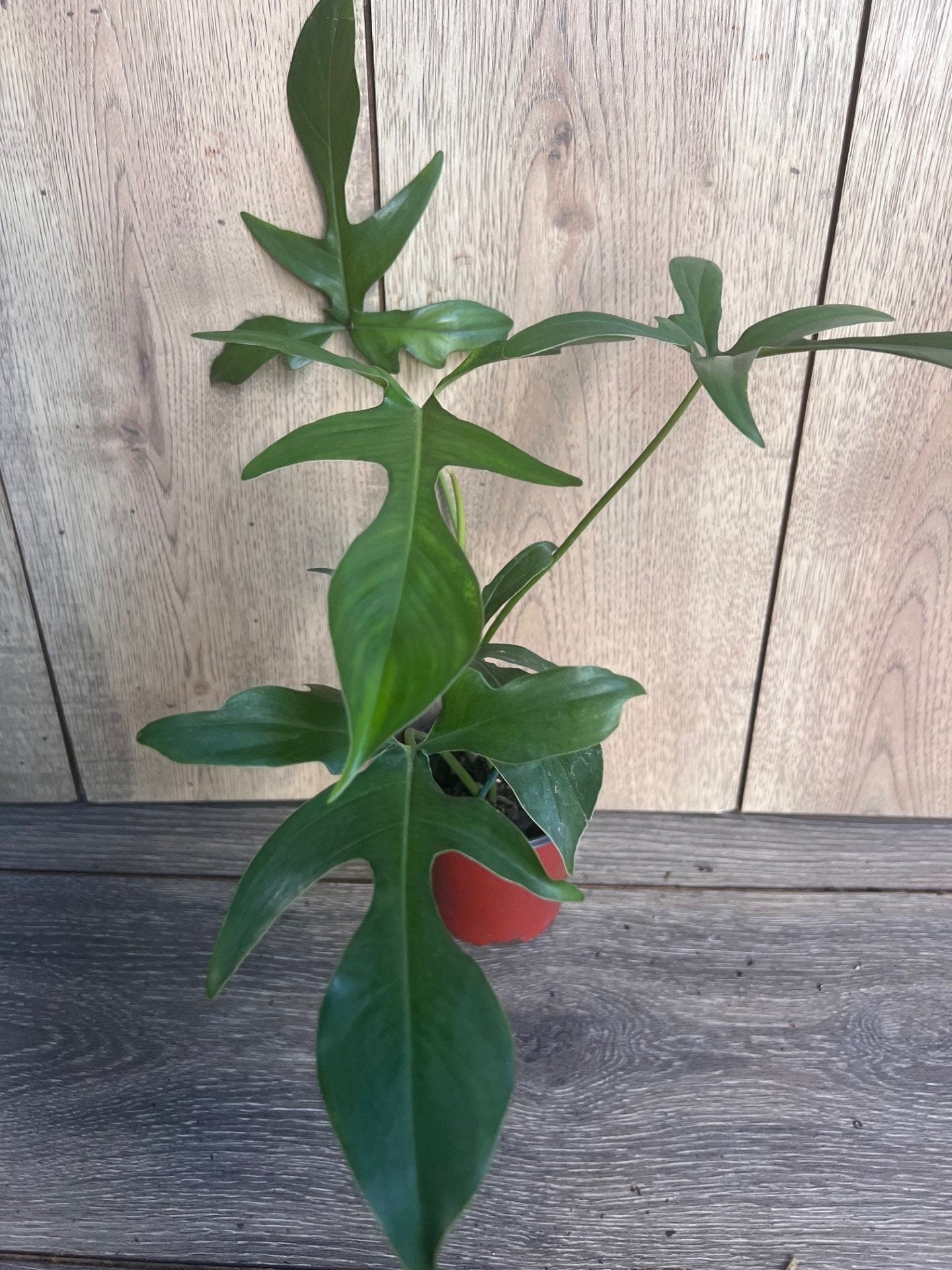Philodendron Pedatum Glad Hands In 4" Pot
Philodendron Pedatum Glad Hands In 4" Pot
Couldn't load pickup availability
Note: you will receive Philodendron Pedatum Glad Hands in 4" Pot similar to the pictures
Philodendron 'Glad Hands' is a relatively rare and striking cultivar within the Philodendron family, known for its unique leaf shape and vibrant appearance. It features elongated, glossy, heart-shaped leaves that are a deep green color, with some varieties showcasing lighter veins or a slight variation in tone, adding depth to its foliage. One of the most notable characteristics of Philodendron 'Glad Hand' is the distinctive, large, rounded leaves that have a slightly more rigid or thick texture compared to some other Philodendrons. It is a relatively slow-growing species, but over time it develops into a stunning, well-formed plant with a compact, bushy growth habit that makes it perfect for both small and larger spaces.
1. Light
- Philodendron 'Glad Hands' prefers bright, indirect light to maintain its vibrant foliage. Too much direct sunlight can cause leaf burn or fading of the glossy sheen, while insufficient light can cause slow growth and reduced leaf color. A spot near a window with filtered light is ideal. If grown in lower light conditions, it may survive, but the plant may become leggy and lose its attractive leaf shape.
2. Watering
- Keep the soil moderately moist, but avoid letting it sit in water. Water the plant when the top 1–2 inches of the soil feel dry to the touch. Ensure that the pot has good drainage to prevent water from accumulating at the bottom, which could lead to root rot.
- Be careful not to overwater. This plant is susceptible to root rot if it is left in waterlogged soil. During the winter months, you can reduce the watering frequency since the plant’s growth slows down.
3. Soil
- A well-draining, loamy potting mix is ideal for Philodendron 'Glad Hands'. You can use a standard indoor potting mix and add perlite or orchid bark for improved aeration and drainage. Good drainage is essential to avoid water retention around the roots, which can lead to root rot.
4. Temperature
- This plant prefers warm temperatures between 65°F and 80°F (18°C and 27°C). Avoid placing your Glad Hands in drafty areas or near cold windows, as it can be sensitive to cold temperatures. It should not be exposed to temperatures below 50°F (10°C).
5. Humidity
- Philodendron 'Glad Hands' thrives in moderate to high humidity. Ideally, humidity levels should be 60% or higher. If your home has dry air, especially during the winter, consider increasing the humidity by placing the plant on a humidity tray, using a humidifier, or occasionally misting the leaves.
- Low humidity can cause the leaf tips to brown, so it’s important to maintain consistent moisture in the air.
6. Fertilizing
- During the growing season (spring and summer), feed your Philodendron 'Glad Hands' every 4–6 weeks with a balanced, water-soluble fertilizer diluted to half strength. This supports healthy growth and vibrant foliage.
- In fall and winter, reduce fertilizing since the plant’s growth slows down. Over-fertilizing during this time can harm the plant.
7. Pruning
- Pruning isn’t necessary for the overall health of Philodendron 'Glad Hands', but you can remove any yellow or damaged leaves to keep the plant looking tidy.
- If the plant becomes too leggy, you can cut back the stems to encourage bushier growth. You can also prune it to maintain a desired size or shape.
- As this is a climbing or trailing plant, you may choose to provide a moss pole or support for vertical growth. This will encourage the plant to grow upwards and develop larger, more dramatic leaves.
8. Repotting
- Repot your Philodendron 'Glad Hands' every 1–2 years or when it becomes root-bound. When repotting, choose a pot that is 1–2 inches larger than the current pot to allow room for growth. Refresh the potting mix with a new, well-draining mixture to provide fresh nutrients and improve root health.
- Avoid repotting too often, as this can stress the plant, but if it’s outgrowing its container or roots are becoming overcrowded, a new pot is needed.
9. Pests and Diseases
- Philodendron 'Glad Hands' is generally pest-resistant, but common houseplant pests like mealybugs, aphids, scale, and spider mites can still pose a threat. Inspect your plant regularly for signs of pests, particularly on the undersides of the leaves and stems.
- If pests are detected, treat the plant with neem oil, insecticidal soap, or wipe down the leaves with a damp cloth.
- Root rot can occur if the plant is overwatered or if the soil doesn’t drain properly. To prevent this, always ensure good drainage and avoid letting the plant sit in standing water.
10. Propagation
- Philodendron 'Glad Hands' can be propagated through stem cuttings. To propagate, cut a healthy stem with at least one node (the part of the stem where a leaf grows). Place the cutting in water or directly into moist, well-draining soil. Once the cutting develops roots (usually within 2-3 weeks), it can be potted in its own container.
Share
